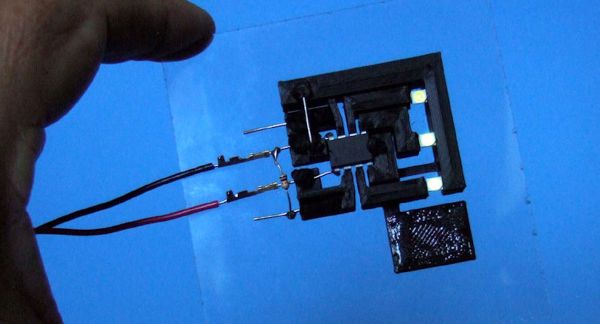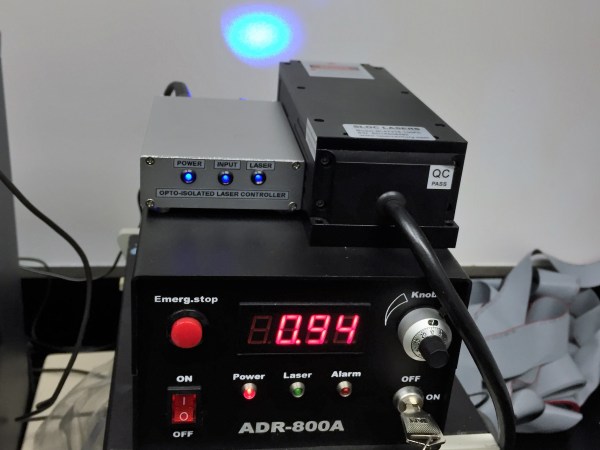One of the problems encountered thus far with 3D-printing circuits with conductive filament is that it doesn’t really bond to anything, let alone solder, so how does one use it?
[mikey77] wrote an Instructable showing how to print circuit boards and create simple circuits, using shape of the plastic as a way to control the circuit. We like how he used using the flexible nature of the filament to make buttons, with two layers of conductive material coming together with the press of a finger.
He also created a linear potentiometer with a 3D-printed wiper that increases the ohms of the connection the farther it’s pushed. The filament doesn’t have the same conductivity as copper so [mikey] was able make resistors by stringing pieces of conductive plastic between two leads. There are also some hexagonal touch pads that turned out very nice.
We’ve published a lot of posts about DIY circuitry, including a previous effort of [mikey]’s, 3D-printed solderless circuits, plus another post about printing point-to-point circuits on a 3D printer.




![The kind of travesty that can occur when [Stefan Kiese] doesn't have access to nice project boxes.](https://hackaday.com/wp-content/uploads/2016/07/img_3466.jpg?w=250)











